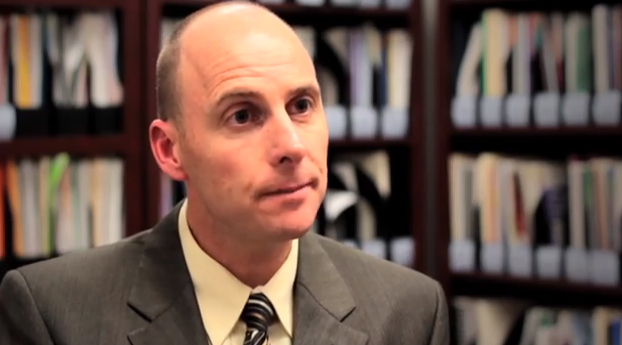"So we have now a huge change where everyone under a certain income level -- not whether you're a parent, whether you're a disabled adult, but all low-income adults and children -- are eligible for Medi-Cal and they're in this accountable delivery system."
With the expansion of Medi-Cal under the Affordable Care Act close to a third of all Californians are Medi-Cal beneficiaries. Douglas says it's about more than access to primary and secondary care, but goes beyond that to access to mental health services and substance use treatment.
From a big-picture perspective, the move to managed care means more focus on care that "organized around the consumer," Douglas said. Instead of primary care in one location, specialty care in another and mental health care, for example, in yet a third location, the state is pushing to organize care in a more patient-centered and systematic way.
"Now that we have comprehensive benefits that are working together, to make sure you are providing the right care to those on Medi-Cal or those that are on Covered California. And you’re going to see the different systems - - Medi-Cal, Covered California and the providers -- working together."
Provider Rate Cuts Looming
One of the challenges facing California is the limited number of providers who accept Medi-Cal. Those providers already receive some of the lowest reimbursement rates in the country.
As Jan. 1 approaches, a two-year pay raise for primary care doctors, funded by the Affordable Care Act, comes to a close. On the same day, a state-implemented 10 percent rate cut to health care providers, a cut that was tied up in court for two years, takes effect. Many advocates worry that low reimbursement rates will push the few remaining providers to stop accepting Medi-Cal patients.
I asked Douglas if he thought that the state might eventually require providers to provide care for a certain percentage of the Medi-Cal population?
"No, I don’t see a future where we're going to have laws to require providers" to take Medi-Cal, he said. "What I see is a future where Medi-Cal is becoming more and more mainstream. And it’s becoming more and more the case that health plans want to participate in Medi-Cal and providers do, too." '
Douglas agreed that fee-for-service rates were low, but he argued that plans are not looking at those rates. Plans are accountable and have to provide care. Plans need to work with providers to figure out rates, he argued. Both plans and providers benefit from being part of Medi-Cal, Douglas said.
"(Plans) are going to have to keep on figuring out what the market dictates to make sure there are a sufficient number of providers. And providers are going to have to see that a third of the market is now Medi-Cal," Douglas said. "If they want to be seeing patients, and knowing that patients are going to move from Medi-Cal to other forms of coverage, whether it’s Covered California or employer-based, that they're going to need to participate."
Providers will need to offer services differently to keep their costs down, Douglas said, and will likely start looking at group visits, e-consults and email visits.
"So fundamentally I think over time, Medi-Cal is going to become more and more mainstream and providers are going to participate in the program," Douglas said.
DHCS Structural Changes
As the Medi-Cal population has moved into managed care, Douglas said that DHCS had to dramatically reorganize as well.
Douglas also said the agency has worked hard to increase transparency. "We've gone through a lot of work on increasing our stakeholder engagement, increasing our focus externally. And it's never enough, but we have accomplished so much to increase our engagement, whether it's through the website, through newsletters, through stakeholder convenings -- to really make sure make sure that we're engaging and being informed by the public input."
He said efforts around transparency is something that DHCS will continue to work on.
"Accountability and performance of our plans is another, which is also about transparency -- making sure we're being able to publicly report on their accountability, as well as the integration around behavioral health with physical health, those are all going to be big areas to focus on as we move forward."
Douglas also discussed key initiatives for older Californians:
- Aging population, specifically the Coordinated Care Initiative: There are multiple components of that initiative, from our work on trying to make sure that we're rebalancing care in providing home and community-based care, to better integrating [care], whether it's the personal care services, home care services with behavioral health and physical health.
- End-of-life care: And looking at efforts to do better palliative care, where we're giving the right choices and the right ability to receive care in the home at the end of life rather than always in an inpatient setting. And I expect, fully expect, that we in the department will be looking at ways to continue to push that.
As we wrapped up, Douglas declined to say what he might do next. "I'm still exploring all my options," he said, "but I still definitely want to continue to make sure that I'm improving the overall health. And I am looking at different places to do that."
"This has been an amazing experience, amazing opportunity. Public service is just an honor. Maybe in the future I'll come back into service, whether it's the state, county or federal level. But for now I'm trying different opportunities."
